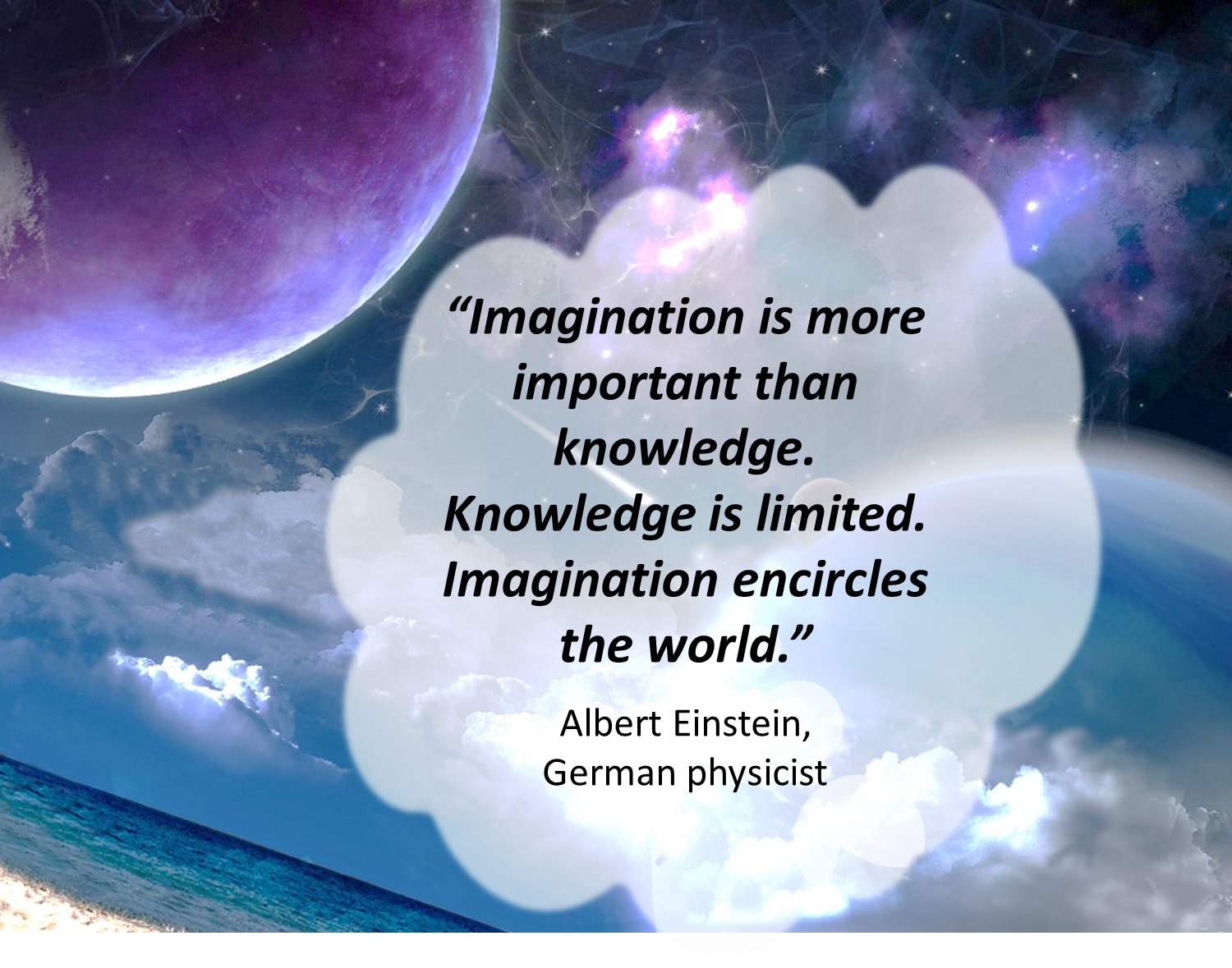(Creative Visionaries is the 8th of a 9-part series on creativity traits.)
Curious: passionate for fresh knowledge; desiring to learn new things
Resilient: capable of overcoming setbacks; able to take risks; ambitious Evaluative: willing to experiment and evolve your creativity beyond the idea stage
Autonomous: independent; norm-doubting
Tuned in: open and alert to the world around you; highly perceptive
Introspective: driven by innate (intrinsic) rewards; self-accepting
Visionary: having dreams and aspirations; original thinking
Energetic: adept at managing and recharging your energy
 A consultant I recently had breakfast with made an interesting statement. “The trouble in business and government today is that we have too many visionaries.”
A consultant I recently had breakfast with made an interesting statement. “The trouble in business and government today is that we have too many visionaries.”
In the context of the conversation it made sense. If everyone simply talks about vague strategies, nothing gets accomplished.
But that doesn’t mean visions are unimportant. The truth is, they are.
Being passionate, as I discussed in my last post, motivates you to work on something. But what that something becomes depends on your vision.
What are creative visionaries?
Creative visionaries may be viewed as impractical dreamers. As quirky entrepreneurs. Or even as geniuses. The “right” answer depends on your definition of vision and visionary. Here are a few.
- Merriam-Webster defines vision as: “something that you imagine – a picture that you see in your mind.” It defines a visionary as: “one having unusual foresight and imagination.”
- Dictionary.com defines vision as: “the act or power of anticipating that which will or may come to be.” A visionary is defined as: “a person of unusually keen foresight.”
- Oxford Dictionaries defines vision as: “the ability to think about or plan the future with imagination or wisdom.” A visionary is defined as: “a person with original ideas about what the future will or could be like.”
The common themes in these definitions – imagination, originality, and foresight – are what I’d like to focus on here. Creative visionaries use imagination to create mental pictures. They use original thinking to challenge the status quo. And they use foresight to connect their concepts to the future.
Imagination of creative visionaries
Imagination is the gateway to creative intuition. It starts with dreaming and daydreaming. We do it all the time in an unfocused way. Sometimes it’s referred to as creative visualization. According to the University of Pennsylvania’s Imagination Institute, imagination is “the conscious representation of what is not immediately present to the senses.”

Your goal is to experience the outside world inside your mind. First, ask a lot of “what if” questions. Then use your imagination to connect the answers into a virtual tapestry. Form and manipulate mental images in your brain’s neural network.
To start, practice visualization. Look out the window. Pick out an object (a car, fire hydrant, sign or anything). Mentally rotate it as a 3D image. “See” it in your mind from all angles.
Or take two objects (either physical or non-physical such as music). Reflect on how you could combine them into a single complex item.
Write stories, especially fiction where you need to connect with the characters.
Practice photography. Manipulate the images with digital software.
Remodel your home.
Your imagination goal is to work on activities that require complex, holistic connections.
Einstein believed intuition and imagination spawned achievements in both science and art. He suggested the main difference was that science is conveyed in the language of logic. Art is conveyed through the senses. But imagination is the starting point for both.
Originality of creative visionaries
Next up, originality.
While it’s important to “think outside the box,” originality is more than that. You should know what’s in the box first.
People at times think they have created something original simply because they haven’t explored what’s actually out there.

So rather than isolate creativity, give your brain significant mental stimuli. Then let it incubate in an effort to create fresh ideas. Original thinking may simply be “seeing what everybody has seen and thinking what nobody has thought.” Reconfigure existing gadgets. Try unconventional applications of current things. Give them new life.
Originality means viewing things in novel ways. But it doesn’t necessarily mean reinventing the wheel. As William Craig pointed out in Fortune’s Why Creativity Isn’t all About Originality, vision can be focused on execution. Lego, Apple and Oreo, for example, were successful due to business savvy as much as invention.
Foresight of creative visionaries
Finally, being a visionary means looking into the future.
MIT defines foresight as “the Art and Science of inventing and designing the future. It is the first and key step of innovation in a fast-changing world.”

Creative thinkers need hindsight, insight and foresight.
Hindsight consists of the data describing what happened.
Insight is the interpretation of the data to explain why it happened.
Foresight is your analysis of what might happen. Use foresight to ground your creativity not just in the present, but also in how the idea fits into a future scenario.
George E.L. Barbee, in Two Simple Concepts for Thinking about the Future (Strategy+Business) recommends building a “foresight network.” Find people with diverse experiences and views on the future to help inform the process of creativity and innovation.
Where to from here?
Being a visionary – tuning into your dreams, aspirations and inventiveness – can be both energizing. But it can also be exhausting. Consequently, it’s worth taking a look at energy management in my next and final post of this 9-part series.
